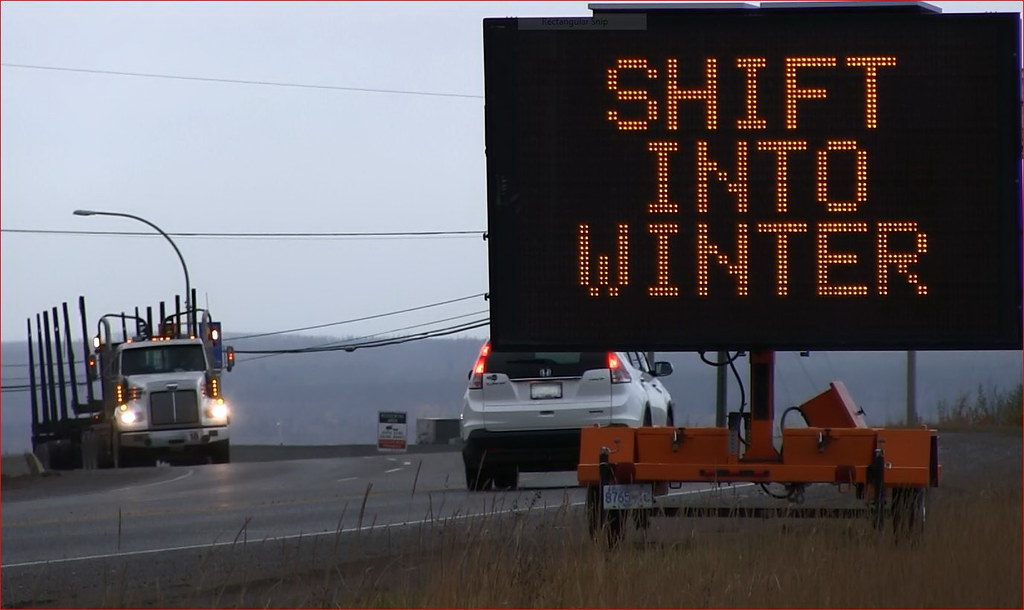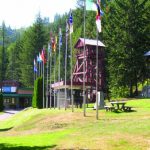Winter doubles crash risk for Rossland drivers; province-wide campaign kicks off
Shift into Winter campaign reminds Rossland drivers to be prepared and plan ahead for Mother Nature’s ultimate road test
Winter driving can more than double your risk of being in a motor vehicle crash in Rossland and around B.C. To help reduce the risk, the Shift into Winter campaign launched province-wide yesterday (October 1) to remind drivers to be prepared and plan ahead.
“Winter is Mother Nature’s ultimate road test,” says Louise Yako, spokesperson for the 13th annual campaign. “Winter conditions can change quickly in the Kootenay Boundary region and push your driving skills to the limit.”
Winter roads can be dangerous due to snow, ice, rain, and fog. “Even the most experienced drivers are challenged by cold temperatures, slippery roads, and reduced visibility,” Yako says. “We want drivers in Rossland to shift into winter by preparing for winter driving before winter weather hits. The time to do that is now.”
In B.C., the average number of casualty crashes due to driving too fast for the conditions more than doubles from fall to early winter – to about 220 in December from about 99 in September, according to statistics on crashes reported to police from 2015 to 2019.
Shift into Winter’s launch coincided with the law requiring all vehicles driving on designated highways in B.C. to have winter tires (3-peaked mountain and snowflake, or mud and snow) with at least 3.5 mm of tread depth starting October 1.
The campaign is designed to raise awareness of the changing weather and driving conditions across B.C. and to remind drivers and employers to be prepared and plan ahead. It’s a joint provincial initiative supported by the Winter Driving Safety Alliance and managed by Road Safety at Work.
The Alliance offers the following tips for Rossland drivers to help them stay safe on the road this winter:
- Prepare your vehicle by installing a set of four winter tires with the 3-peaked mountain and snowflake symbol. “These tires offer the best traction on snow, ice, and in cold weather,” Yako notes.
- Give your vehicle a pre-winter maintenance check-up every year
- Carry a winter driving emergency kit
- Check road conditions on DriveBC.ca before heading out. “Is it safe for you to go?” Yako asks. If possible, postpone your plans and avoid driving when road and weather conditions are poor.
- Slow down to meet the road conditions. Keep at least four seconds between you and the vehicle in front. “Give yourself plenty of room in situations where you may need to brake suddenly,” she says.
- Prepare yourself by knowing how to drive for the conditions before you get behind the wheel. “You can’t predict how your vehicle, or another driver’s vehicle, will react in snow or on ice,” Yako says. Learn how to brake safely, get out of a skid, and become familiar with how your vehicle handles in winter weather. Think of it as building muscle memory: Your winter driving skills are rusty at the beginning of the season but you can commit them to memory by practicing them repeatedly as soon as wintry weather arrives.
Visit ShiftIntoWinter.ca for more free information and resources that can help reduce the risks when driving during winter.
If you drive for work, the Alliance reminds you to follow safe work procedures and report any unsafe conditions to your supervisor. If you employ or supervise workers who drive on the job, take Shift into Winter’s free Winter Driving Safety for Employers and Supervisors online course. Everyone who completes the course and an exit survey will be entered in a draw for a gift certificate for four winter tires (value up to $1,000), donated by Kal Tire. For details, visit ShiftIntoWinter.ca/online-course/ .
Tires, chains required as of October 1
Winter tires or chains are required on all vehicles on most designated highways in B.C. from October 1 to March 31. For select highways, including mountain passes and rural routes in high snowfall areas, the date is extended until April 30 to account for early spring snowfall. These highways are marked with regulatory signs.
Non-compliant drivers may be turned away and be subject to a fine. Drivers can find more information on DriveBC.ca.























